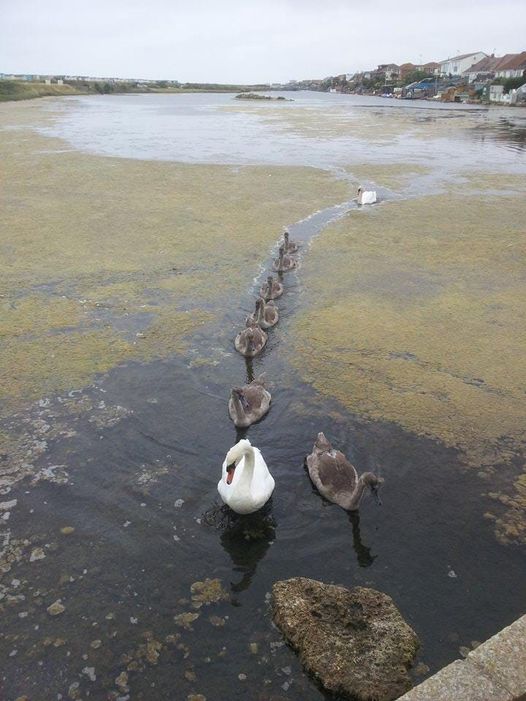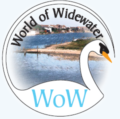With Spring in the air and the Swans showing activity around the nest site I thought I would post some info about the breeding season – sorry if this turns into a long read!
First a bit of history – for newcomers to the area – The Widewater is the home and territory of a pair of long standing breeding Swans. They have been breeding here together since 2010. Previously the male ( Cob ) has another mate but she was killed by a fox in 2009. Difficult to know precisely but I think he’s probably in his mid twenties now and as Swans get older they have fewer cygnets.

Photo courtesy of Mo Wilson
The pair have been very successful and experienced parents who have produced 31 surviving cygnets who have flown into the wild. Swans are excellent parents generally and they work together to keep their young safe which is one of the reasons that they establish such a strong bond as mates.
March is the best time to watch out for them mating which they do frequently. It’s a beautiful ritual. If you see them head dipping into the water alternately then keep watching as this is the beginning of the ritual. It goes on for quite a long time! Towards the end of March the female ( Pen ) will sit on her nest and start laying her eggs – usually about 7/8. Once she has finished laying she will shed the feathers from her underside to create a brood patch which allows the warmth of her body through to incubate the eggs. She will sit on her eggs for 35-40 days only leaving the nest very occasionally to feed and the cob will take over sitting on the eggs. You will notice that she is feeding intensively now as she knows she has to build herself up for this long period.The Cob must protect her whilst on the nest and you will notice him sitting by her most of the time though he will leave her to patrol the territory.
The cygnets almost always hatch at the very beginning of May. Dave and Mo Wilson who have the best view of the nest site and who keep a close eye on them, let us know when signs of hatching begin. For a few days the newly hatched cygnets stay by the nest but Swans need to get them on the water asap to feed and to waterproof so they are soon taken on to the lagoon. This is a very vulnerable period for the cygnets. They are at risk from predators mainly Fox, Gulls and Crows. Last year sadly, the nest was raided and 2 of the 3 cygnets that hatched were taken by a Fox. It’s impossible to protect them completely from predation – that’s nature.
We can help a little and we have a fence that hopefully will deter the Fox but in the end he can find a way. Gulls will watch and wait from the roof tops but Swans are very good at protecting their young and by having one parent at the front and one at the back they usually keep them safe once in the water. One beautiful thing to watch out for is the Pen carrying her cygnets on her back! If the cygnets get to two weeks old they are usually big enough by then to be safe. We all hold our breath during this time and count them every day! The natural food for Swans and cygnets is weed. There’s plenty in the lagoon and the parents pull it up from the lagoon bed to feed their young.
One helpful thing that we can do is to provide fresh water for them. The lagoon is saline and for a few weeks, the cygnets are still developing the gland that excretes the salt from their blood stream. Putting out a shallow container of fresh water will be helpful at this time if you can find an accessible place.
We may have some Mallard ducks breeding here too but unfortunately the ducklings have never survived. They are not such good parents and the males leave the young to the females to look after. Many are left on their own and then predated by Gulls. I’m happy to try to help any orphans so please contact me. Hope you enjoy another wonderful breeding season on Widewater and fingers crossed for them.
By Jo Procter

